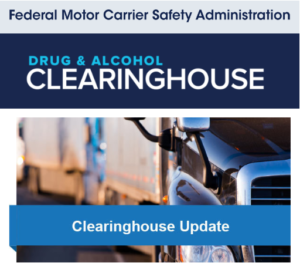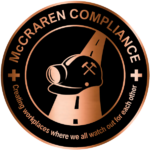 CDL Drivers in a “prohibited” status in the Clearinghouse will lose their commercial driving privileges.
CDL Drivers in a “prohibited” status in the Clearinghouse will lose their commercial driving privileges.
The second Clearinghouse final rule (Clearinghouse-II) compliance date—November 18, 2024— is less than a year away. As part of these new Federal requirements, CDL drivers who have open violations in FMCSA’s Drug and Alcohol Clearinghouse will soon lose their commercial driving privileges.
FMCSA added the following frequently asked questions on the Clearinghouse website to help CDL drivers understand the new regulations, and what actions they can take to retain or reinstate their commercial driving privileges, if needed.
How will the second Drug and Alcohol Clearinghouse final rule (Clearinghouse-II) affect CDL drivers?
As established in the first Clearinghouse final rule (81 FR 87686), drivers with a “prohibited” Clearinghouse status are prohibited from operating a commercial motor vehicle (CMV). The second Clearinghouse final rule (Clearinghouse-II) further supports this by ensuring that drivers with a “prohibited” Clearinghouse status do not continue to hold a commercial driver’s license (CDL) or commercial learner’s permit (CLP).
The Clearinghouse-II final rule (86 FR 55718) requires that, beginning November 18, 2024, State Driver Licensing Agencies (SDLAs) must remove the commercial driving privileges from the driver’s license of an individual subject to the CMV driving prohibition. This would result in a downgrade of the license until the driver completes the return-to-duty (RTD) process.
This means that, beginning November 18, 2024, having a “prohibited” Clearinghouse status will result in losing or being denied a CDL or CLP.
Note: SDLAs with legislative authority currently have the option to voluntarily query the Clearinghouse and downgrade CDLs for prohibited drivers and may do so before the November 18, 2024 compliance date.
How will the second Drug and Alcohol Clearinghouse final rule (Clearinghouse-II) improve safety on our Nation’s roads?
The requirement to downgrade commercial driver’s licenses (CDLs) of drivers in a “prohibited” Clearinghouse status rests on the safety-critical premise that drivers who cannot lawfully operate a commercial motor vehicle (CMV) because they engaged in prohibited use of drugs or alcohol or refused a drug or alcohol test should not hold a valid CDL or commercial learner’s permit (CLP). The Clearinghouse-II final rule (86 FR 55718) supports FMCSA’s goal of ensuring that only qualified drivers are eligible to receive and retain a CDL, thereby reducing the number and severity of CMV crashes.
My commercial driver’s license (CDL) was downgraded due to my “prohibited” Clearinghouse status. How can I get my commercial driving privileges reinstated?
To have your Clearinghouse status change from “prohibited” to “not prohibited,” you must complete the return-to-duty (RTD) process, as established by 49 CFR part 40, subpart O. After you complete the RTD process and your Clearinghouse status is updated to “not prohibited,” your State Driver Licensing Agency (SDLA) will allow you to reinstate your commercial driving privileges.
FMCSA has created a resource that outlines the steps drivers take to complete their RTD process: download the Return-to-Duty Quick Reference Guide. For more information about the RTD process, visit the Clearinghouse Learning Center.
McCraren Compliance can help you understand and comply with FMCSA, USDOT and ADOT and ensure your drivers and your vehicles operate safely and efficiently.
Call us Today at 888-758-4757 or email us at info@mccrarencompliance.com to schedule your free FMCSA Compliance Assessment.
Original article published by FMCSA


